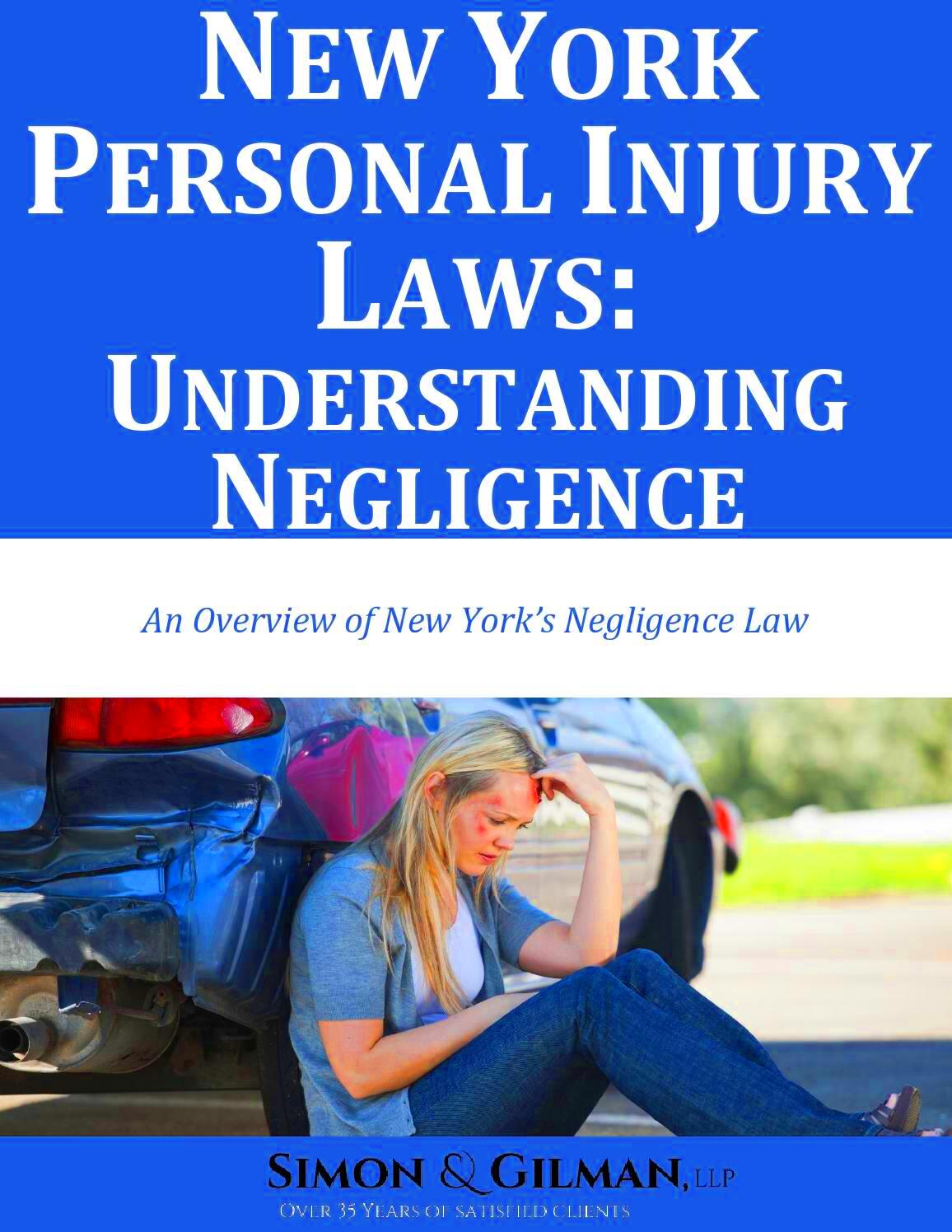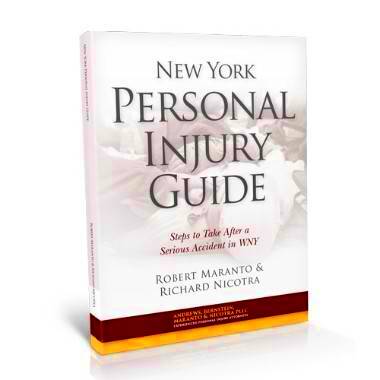New York Personal Injury Regulations: Key Points
In New York, there are numerous laws aimed at safeguarding people who have been harmed as a result of another person’s carelessness. The law addresses how a personal injury case can be lodged, managed and compensated for. Whether it is an auto accident issue, slip and fall concern or anything related to medical malpractice, these rules are key elements to understanding what one deserves in terms of compensation. At first glance the laws may appear to be overly complicated; even so, once you digest the basics of it; everything seems less murky.
Understanding the Statute of Limitations for Personal Injury Cases

The statute of limitations is essentially a deadline for filing a personal injury lawsuit. In New York, this time limit is typically three years from the date of the injury. If the case involves medical malpractice, the deadline may be shorter—usually around two and a half years.
The act of filing after the passing of the statute generally implies a loss of your legal rights. Nevertheless, such cases have their exemptions:
- If the injured person is a minor, the statute may be paused until they turn 18.
- In cases involving government entities, you may have as little as 90 days to file a notice of claim.
It is very important to remember these due dates because if something is not done on time, it would be almost impossible to get back the money.
How Fault is Determined in New York Personal Injury Law

New York follows a system known as comparative negligence, which means that fault is divided among all parties involved in an accident. Even if you’re partially at fault for your injury, you can still recover damages, but your compensation may be reduced based on your percentage of fault. For example, if you’re found to be 20% at fault and the total compensation is $100,000, you would only receive $80,000.
Fault determination is commonly achieved using this method:
- Police reports: These often provide a starting point for determining fault, especially in car accident cases.
- Eyewitness accounts: Statements from those who saw the accident can be used to establish what happened.
- Expert testimony: Professionals like accident reconstructionists may be called to analyze how the accident occurred.
The objective for this application is just to allocate liability, however it can complicate matters if there are more than one participant.
The Role of Insurance in Personal Injury Settlements
New York is in the business of insurance when it comes to personal injury settlements. Whether it be an auto accident, slip or fall, or workplace injury, usually the payment goes through the insurance company of the party that caused the accident. Men and women who have suffered from these types of injuries frequently find themselves up against the wall when negotiating with an insurance company. In spite of advertising efforts to make customers feel important, insurance companies are simply businesses; their main aim is to reduce payouts as much as possible.
An example of how insurance works is shown below:
- Filing a claim: After an injury, you will file a claim with the at-fault party’s insurance company, or in some cases, your own (especially in car accidents under New York’s no-fault law).
- Negotiations: Insurance companies may offer a settlement, which is often lower than what you might deserve. Negotiations with the help of a lawyer can improve the final payout.
- Settlement or trial: If the insurance company refuses to offer a fair settlement, the case may proceed to court.
Take note of the following; victims with critical injuries may be in a situation where the policy limits are not sufficient to cover all damages caused by an accident. In such instances, you may need to look for extra compensation from the wrongdoer through litigation.
Common Types of Personal Injury Claims in New York
Numerous personal injury claims are reported in New York State, with the majority classified as follows.
- Car Accidents: Given New York’s busy roads, accidents are frequent. Injured parties can file claims under the state’s no-fault insurance system or pursue lawsuits in more severe cases.
- Slip and Fall: Property owners are responsible for maintaining safe premises. If someone is injured due to hazardous conditions, like wet floors or uneven sidewalks, they may be entitled to compensation.
- Medical Malpractice: When a healthcare provider’s negligence leads to injury or worsening of a condition, it falls under medical malpractice. This is a complex area of law requiring proof that the standard of care was not met.
- Workplace Accidents: Injuries at work are common, and while workers’ compensation often covers these cases, there are situations where an injured employee can pursue a personal injury claim as well.
Different types claims for individual injuries have their own specific problems that must be overcome; thus, knowing the type of claim that your case is under moves you a step ahead in terms of preparation for the legal procedure.
Comparative Negligence Rule and its Impact on Claims
New York’s comparative negligence rule can significantly impact the outcome of a personal injury claim. Under this rule, your compensation can be reduced if you are found to be partially responsible for the accident. This is unlike states that follow a contributory negligence rule, where even 1% fault could prevent you from receiving compensation.
This is how comparative negligence functions:
- If you are 20% at fault and the total damages are $100,000, you would receive $80,000, as your share of responsibility reduces your compensation.
- Even if you’re found to be 50% or more at fault, you can still recover compensation, but the amount will be adjusted according to your share of responsibility.
In many intricate situations that require different parties to take note of this concept, however. The injured parties can recover damages, but it becomes necessary to prove that the other party is predominantly at fault.
In order to receive the highest possible compensation for your case, it is important to work with an attorney who knows how to advocate for a proper apportionment of blame.
What to Expect During the Litigation Process
Once your decision to file a personal injury action in New York has been made, it’s useful to familiarise yourself with what will follow. Though beginning litigation may be an intimidating experience, getting acquainted with its stages can simplify it considerably. The following is an overview of usual proceedings:
- Filing the Complaint: The process begins when your lawyer files a formal complaint with the court, detailing your injuries and the damages you are seeking.
- Discovery Phase: Both sides gather evidence. This can include documents, medical records, depositions, and witness testimonies. The discovery process can take months depending on the case’s complexity.
- Mediation and Negotiation: In many cases, parties attempt to settle before going to trial. Mediation, led by a neutral third party, can often result in an agreement without needing a courtroom battle.
- Trial: If the case doesn’t settle, it proceeds to trial. Both sides present their arguments, witnesses testify, and a judge or jury decides the outcome.
- Appeals: If one side is unhappy with the decision, they may file an appeal, but this can prolong the resolution process.
The litigation process is lengthy, but it is meant to review all facts completely. Your lawyer will lead you all through it, giving you information and assistance.
How Compensation is Calculated for Personal Injury Cases
Calculating compensation in personal injury cases can be a complex task, as it involves more than just medical bills. In New York, damages are typically divided into two main categories: economic and non-economic damages.
- Economic Damages: These are quantifiable costs, such as:
- Medical expenses (both current and future)
- Lost wages or loss of earning capacity
- Property damage
- Non-Economic Damages: These are more subjective, and can include:
- Pain and suffering
- Emotional distress
- Loss of enjoyment of life
Based on the information available, you could follow this approach in terms of determining remuneration:
| Type of Damage | Amount |
|---|---|
| Medical Expenses | $50,000 |
| Lost Wages | $20,000 |
| Pain and Suffering | $100,000 |
The total compensation in this example would be $170,000. However, every case is different, and various factors like the severity of the injury and the long-term impact on your life play a role in the final amount.
Frequently Asked Questions
1. How long do I have to file a personal injury lawsuit in New York?
Generally, you have three years from the date of the injury to file a lawsuit. However, if the case involves medical malpractice, the time limit is shorter—typically two and a half years. It’s always best to consult with a lawyer to confirm the exact deadlines for your case.
2. What if I am partially at fault for my injury?
Under New York’s comparative negligence rule, even if you are partially at fault, you can still recover damages. However, your compensation will be reduced by the percentage of fault assigned to you.
3. Will my case go to trial?
Before most personal injury cases go to trial, they usually settle. If negotiations with insurance companies do not yield a suitable settlement, your attorney may advise you to go ahead and take it to trial.
4. Can I handle a personal injury claim without a lawyer?
Although it is possible for you to represent yourself, personal injury cases can be complicated. Insurance firms may exploit people without legal counsel. However, if you use an attorney, you are more likely to be compensated appropriately.
Conclusion
New York’s personal injury laws ensure that individuals who suffer an injury from another person’s negligence may have a fair chance for compensation. However, when dealing with these laws one has to be careful as they have many competing requirements like knowing about the statute of limitations or how to deal with comparative negligence complexities among others. You need to know the regulations very well no matter what because whether it is a matter of dealing with insurers or getting ready for court; it is very important understand them clearly. The best way to get around these laws is by working with a knowledgeable lawyer who can help you get the compensation that you deserve for your injuries.


